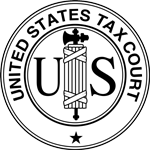- Free Consultation: (772) 418-0949 Tap Here to Call Us
File Your Tax Return Even if You Cannot Pay the Tax
The IRS can assess a penalty on individual taxpayers who fail to file, fail to pay, or both. The failure-to-file penalty is greater than the failure-to-pay penalty. If someone is unable to pay all the taxes he owes, he is better off filing on time and paying as much as he can. The IRS will consider payment options for individual taxpayers. Putting off filing your tax return beyond the due will elicit the IRS’s failure-to-file-penalty. The penalty for filing form 1040 late is usually 5% of the unpaid taxes for each month or part of a month that a return is late. The penalty is based on the tax that is not paid by the due date. The penalty will not exceed 25% of a taxpayer’s unpaid taxes. Here is a breakdown of how the IRS applies the penalty:
- The Failure to File Penalty is 5% of the unpaid taxes for each month or part of a month that a tax return is late. The penalty won’t exceed 25% of your unpaid taxes.
- If both a Failure to File and a Failure to Pay Penalty is applied in the same month, the Failure to File Penalty is reduced by the amount of the Failure to Pay Penalty for that month, for a combined penalty of 5% for each month or part of a month that your return was late.
- If after 5 months you still haven’t paid, the Failure to File Penalty will max out, but the Failure to Pay Penalty continues until the tax is paid, up to its maximum of 25% of the unpaid tax as of the due date.
- If your return was over 60 days late, the minimum Failure to File Penalty is $435 (for tax returns required to be filed in 2020, 2021, and 2022) or 100% of the tax required to be shown on the return, whichever is less.
This is an avoidable expense. If you are ready to file or qualify for an extension, please do so today. If you have not gotten your tax return prepared, the sooner, the better.
For more information, please refer IRS website.











